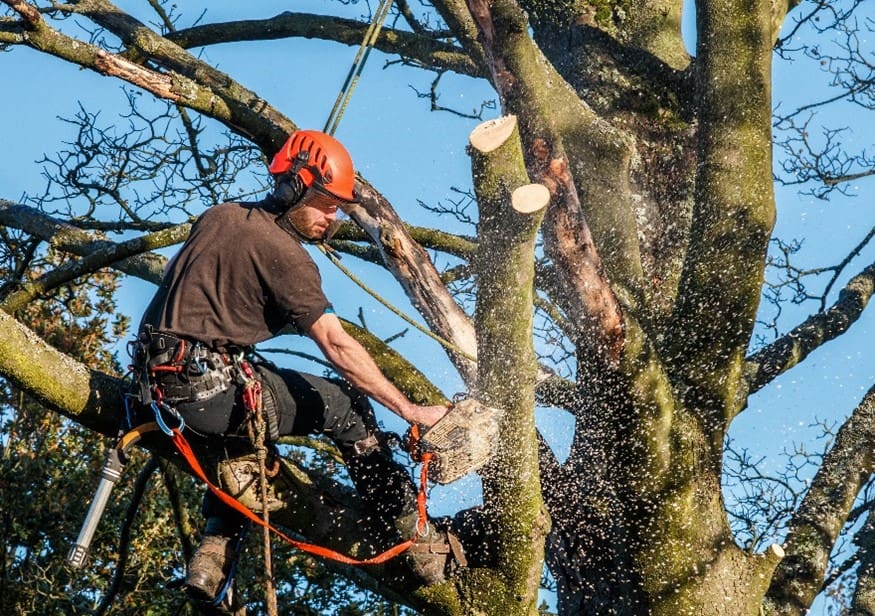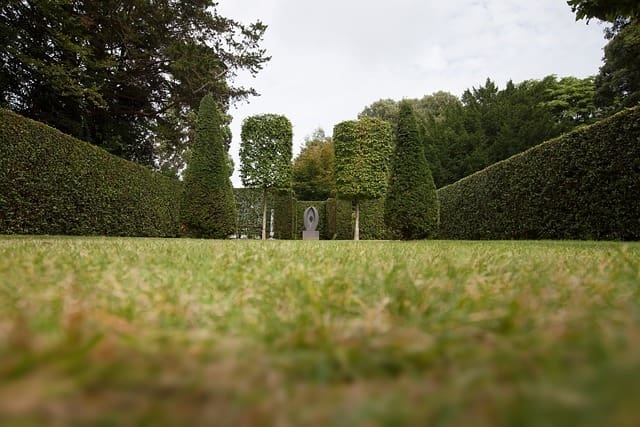Tree Trimming
Understanding the Financial Aspects of Tree Transplantation


I’ve discovered that tree transplantation can be an expensive endeavor. In fact, studies show that on average, it costs around $500 to transplant a single tree.
This financial aspect is crucial to consider for those looking to add mature trees to their landscapes. Understanding the factors affecting transplantation costs, the services provided by professionals, and the additional expenses involved will help you make informed decisions.
Let’s delve into the financial intricacies of tree transplantation to ensure you’re well-prepared.
Cost of Tree Transplantation
The cost of tree transplantation can add up quickly, but it’s a necessary investment for preserving valuable green spaces.
When considering the financial aspects of tree transplantation, it’s crucial to analyze the various components that contribute to these costs.
Firstly, the size and species of the tree play a significant role. Larger trees require more manpower and specialized equipment for safe and successful transplantation.


Additionally, the distance of transportation can impact the overall cost, as longer distances may require additional resources and time.
Furthermore, the health and condition of the tree are crucial factors. Diseased or weakened trees may require extra care and treatments, increasing the expenses.
Finally, the complexity of the site where the tree will be transplanted can also affect costs. Factors such as accessibility, soil conditions, and proximity to utilities can influence the level of effort and resources needed.
Understanding these factors is essential in evaluating and estimating the costs associated with tree transplantation.
Factors Affecting Transplantation Costs
When considering the financial aspects of tree transplantation, several key factors can significantly impact the overall costs. These factors include the size of the tree, the distance of the transplant, the condition of the soil, and the availability of specialized equipment and skilled labor.
Larger trees require more resources and effort to transplant, resulting in higher costs. The distance of the transplant also plays a role, as it affects transportation expenses and the time required for the process.
The condition of the soil is crucial because if it’s unhealthy or unsuitable for the tree’s survival, additional measures such as soil amendments or replacement may be necessary, adding to the overall cost.


Lastly, the availability of specialized equipment and skilled labor can influence the pricing, as their expertise and equipment costs are factored into the final cost.
Understanding these factors is essential for accurately estimating the financial implications of tree transplantation.
Professional Tree Transplantation Services
To understand the financial aspects of tree transplantation, it’s important to consider the role of professional tree transplantation services. These services play a crucial role in ensuring the successful and efficient relocation of trees.
Here are three key reasons why hiring professional tree transplantation services is beneficial:
- Expertise and Experience: Professional tree transplantation services have the knowledge and experience required to handle the complexities of tree relocation. They understand the specific requirements of different tree species and can ensure proper handling and care during the transplantation process.
- Specialized Equipment: Tree transplantation requires specialized equipment to safely uproot, transport, and replant trees. Professional services have access to the necessary tools and machinery, ensuring that the process is carried out smoothly and efficiently.
- Time and Cost Efficiency: Hiring professionals for tree transplantation can save both time and money. They have the expertise and resources to complete the project efficiently, reducing the risk of damage or delays. Additionally, their experience allows them to provide accurate cost estimates, helping you plan and budget for the transplantation process.
Additional Expenses Associated With Transplantation
As a professional tree transplantation service, I’ve encountered various additional expenses associated with the transplantation process. These expenses can significantly impact the overall cost of the project.
One such expense is the cost of permits and permissions required by local authorities. These permits ensure that the transplantation is conducted in compliance with regulations and may involve fees for inspections and approvals.
Another expense to consider is the cost of specialized equipment and machinery needed for the transplantation process. This includes cranes, trucks, and tree spades, which can be quite expensive to rent or purchase.


Additionally, there may be costs associated with tree care and maintenance after transplantation, such as fertilizers, pruning, and pest control.
It’s important to factor in these additional expenses when budgeting for a tree transplantation project to ensure a successful and financially viable outcome.
Cost Comparison: Transplantation Vs. Planting From Scratch
I prefer tree transplantation over planting from scratch due to the cost savings and efficiency it offers. When comparing the cost of transplantation to planting from scratch, there are three key factors to consider:
- Initial Investment: Transplanting a mature tree may require a higher upfront cost compared to planting a young sapling. However, this initial investment is often offset by the long-term benefits of a mature tree, such as improved aesthetics and increased property value.
- Time and Labor: Planting a tree from scratch can be a time-consuming and labor-intensive process, involving site preparation, soil conditioning, and ongoing maintenance. In contrast, tree transplantation can be completed more quickly and efficiently, reducing the overall labor costs.
- Survival Rate: Transplanted trees have a higher survival rate compared to newly planted saplings. This means that the cost of replanting and replacing failed trees is significantly reduced, resulting in long-term cost savings.
Considering these factors, it becomes clear that tree transplantation offers a cost-effective and efficient solution for those seeking to add mature trees to their landscape.


Hello there! I’m Logan Foster, the green-thumbed social media marketer behind the vibrant world of 1800TreeGuy.com. With roots firmly planted in arboriculture, I’ve branched out to help clients cultivate their dream outdoor spaces, one leafy canopy at a time. My knack for nurturing nature is more than a profession—it’s a way of life.
When I’m not talking trees and teaching the art of arboreal care, you can find me cheering on the Bulldogs—my alma mater’s pride and my forever team. My environmental studies there didn’t just teach me about ecosystems; they instilled a lifelong passion for protecting our planet.
Off the clock, I’m an adventurer at heart. Whether it’s trekking the Appalachian trails, pedaling down a mountain path, or crafting guides to share the wonders of the wild, I’m happiest with soil under my nails and the sun on my face. And let’s not forget Yoda, my pug sidekick. He may not have mastered the art of stillness, but his joyful grins are my daily dose of happiness.
I’m all about making connections—between people and the great outdoors and between my clients and their ideal landscape visions. My approach is personal; every tree has a story, and every garden reflects its caretaker.
If you want to green your scene or share in my outdoor escapades, give me a shout on Instagram or Facebook. Let’s cultivate a conversation and grow a community rooted in a love for the lush life.







